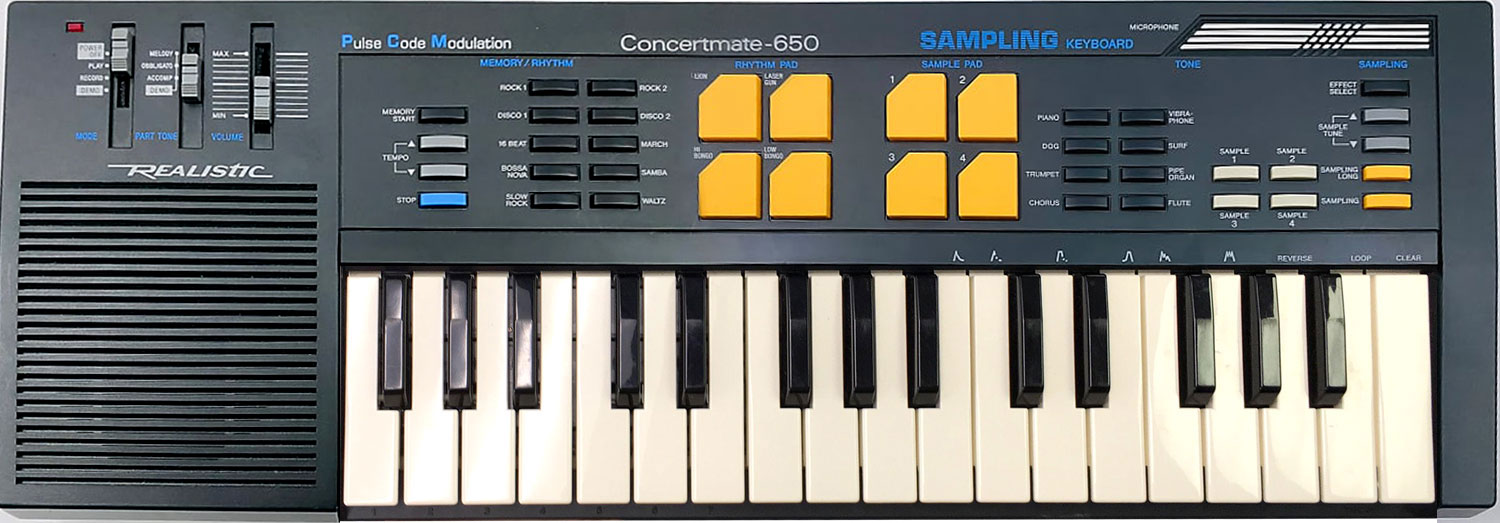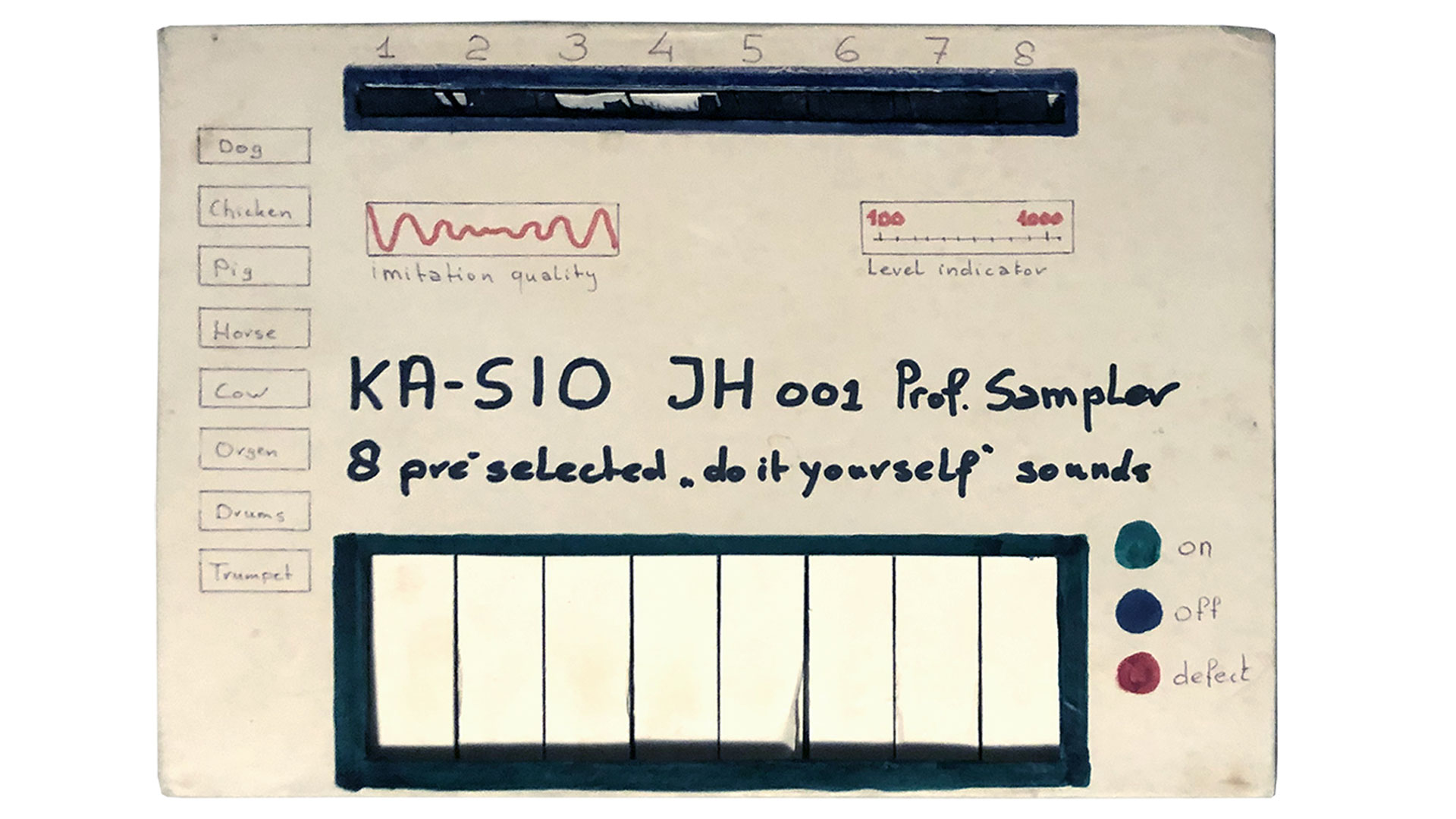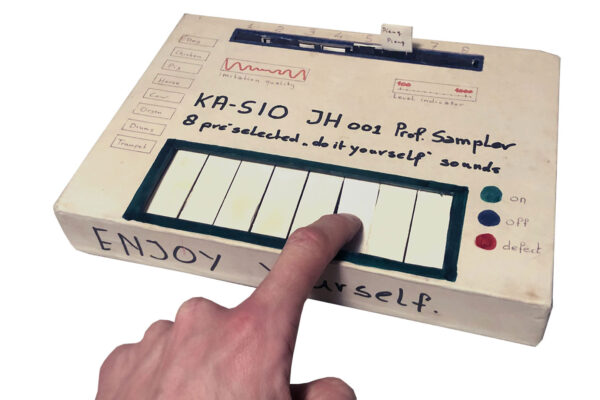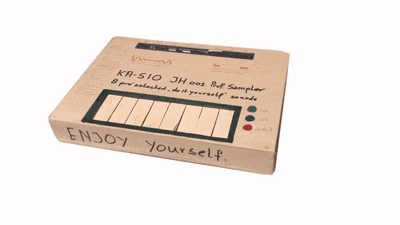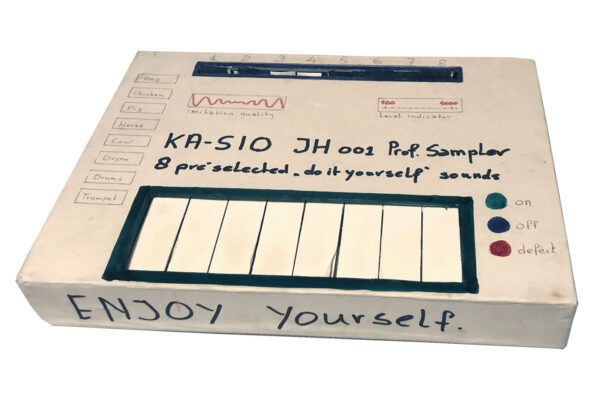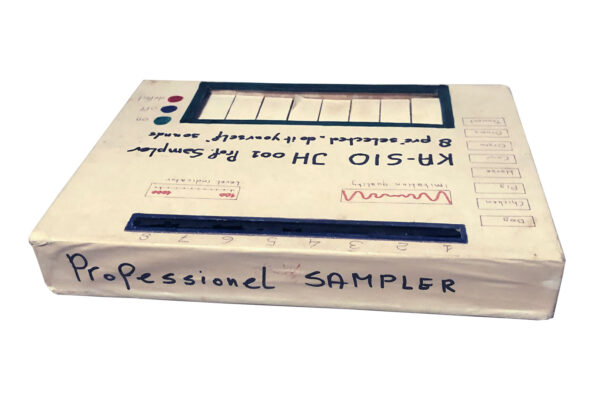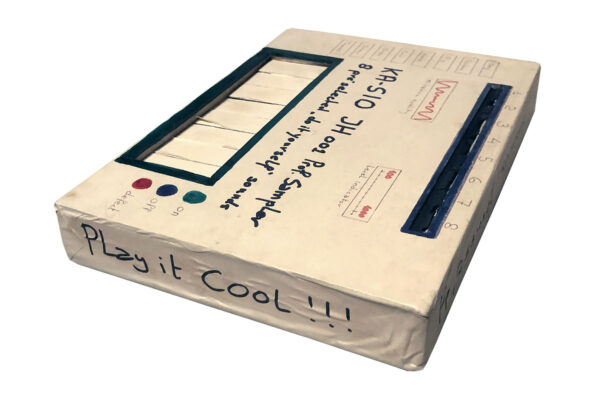In 1987 I bought a Realistic Concertmate 650 sound sampler. I loved that machine. It offered 2x 1.4 seconds or 4x 0.7 seconds of sample time. Not much, but enough to sample a kick, a snare and two sounds for melody, bassline or soundeffects. What more do you need?
Actually… you need a sequencer. The C-650 had no sequencing options, so all rhythms, melodies and chops had to be played and recorded live. You could record one pattern (a beat for example) and play another pattern (i.e. a bassline) on top live while recording it to cassette tape. Playing back this recording and playing new patterns on top while recording it to another cassette tape, made it possible to create more complex compositions.
For these compositions I used samples that I recorded from the radio and from video tapes. I produced my first audio-visual composition using this set-up.
My first audio-visual sampler
In December 1987, my father made my first professional audio-visual sampler. It was especially good for sampling silence. It was equipped with 8 high-quality pre-sampled audio-visual samples. The sampler had virtually no latency, so it was perfect for jamming in the studio. Especially for tracks that needed some extra silent parts.
A great advantage of working with this sampler was that it needed no power and worked completely wireless. It was also very light and shock resistant. This made it the ideal tool for live performances. It would fit in with any song without cluttering the visual and sound composition. Its silent nature made it very easy to mix and blend into any style of performance.

